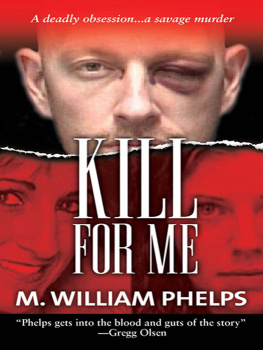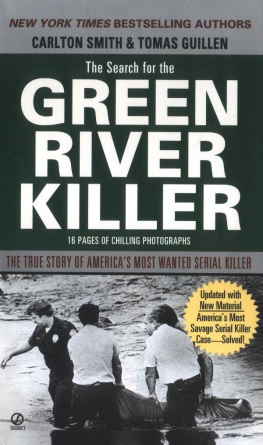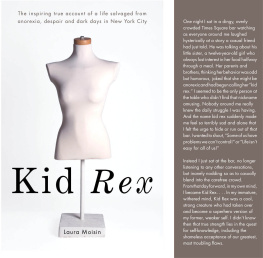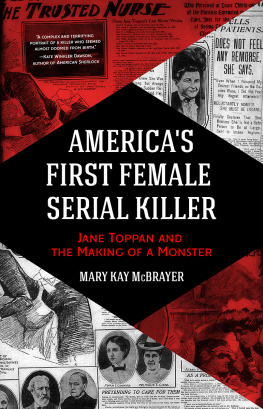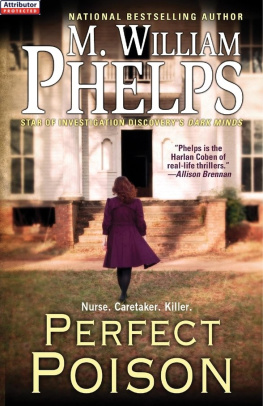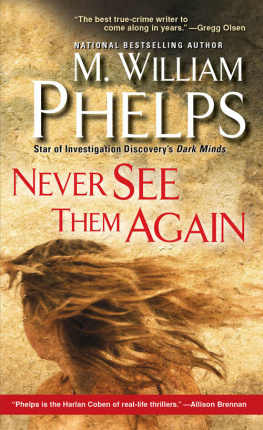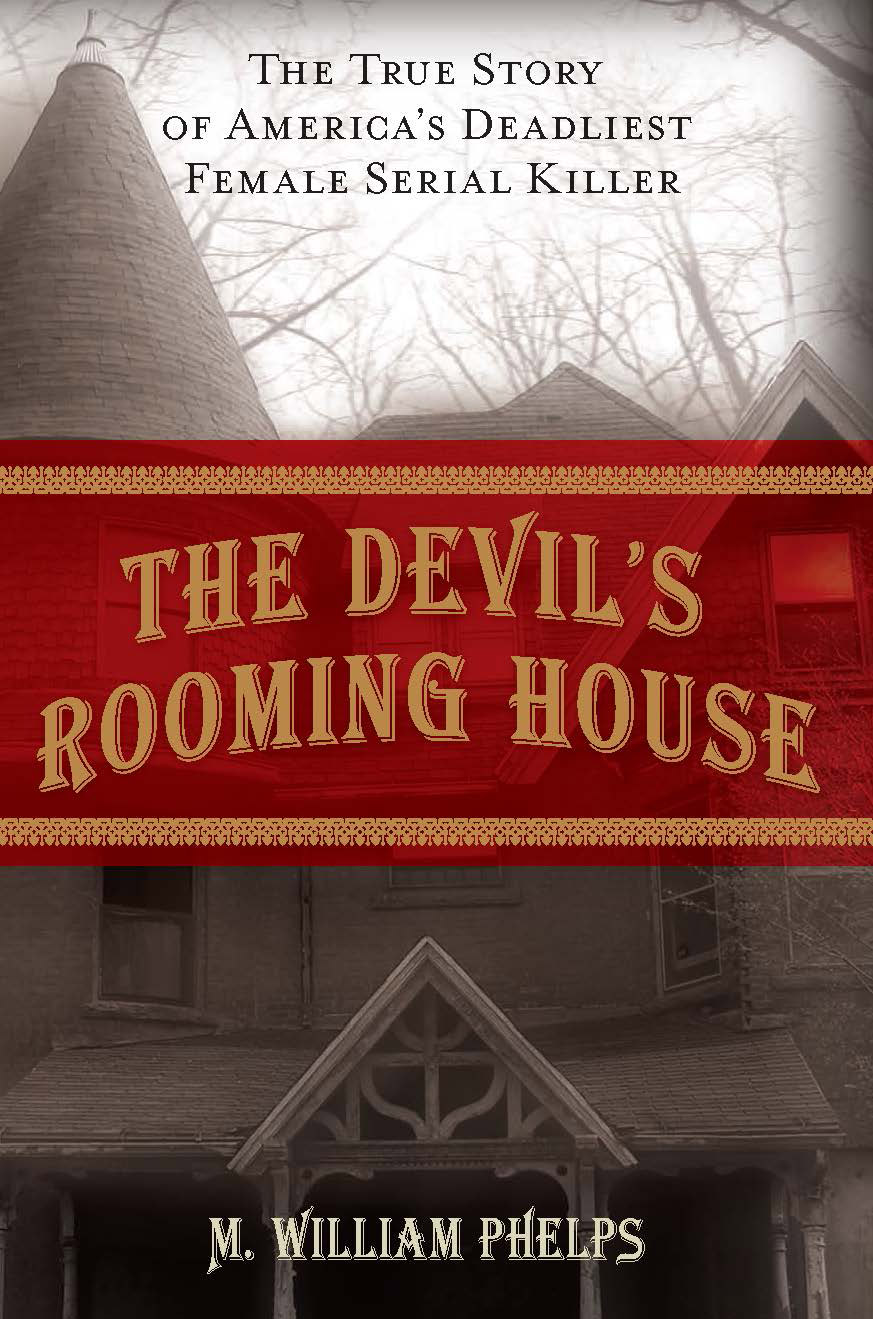About the Author
M. William Phelps, whom Radio America called the nations leading authority on the mind of the female murderer, is the author of many nonfiction books, nearly 600,000 of which are in print. They include Perfect Poison: A Female Serial Killers Deadly Medicine . He has been a consultant for the Showtime TV drama Dexter, and his many national TV appearances include The Discovery Channel and Good Morning America . He lives in Vernon, Connecticut.
THE DEVIL'S
ROOMING HOUSE
Also by M. William Phelps
Perfect Poison
Lethal Guardian
Every Move You Make
Sleep in Heavenly Peace
Murder in the Heartland
Because You Loved Me
If Looks Could Kill
Ill Be Watching You
Deadly Secrets
Cruel Death
Death Trap
Failures of the Presidents (co-author)
Nathan Hale: The Life and Death of Americas First Spy
Copyright 2010 by M. William Phelps
ALL RIGHTS RESERVED. No part of this book may be reproduced or transmitted in any form by any means, electronic or mechanical, including photocopying and recording, or by any information storage and retrieval system, except as may be expressly permitted in writing from the publisher. Requests for permission should be addressed to Globe Pequot Press, Attn: Rights and Permissions Department, P.O. Box 480, Guilford, CT 06437.
Lyons Press is an imprint of Globe Pequot Press
Text designed by Libby Kingsbury
Library of Congress Cataloging-in-Publication Data is available on file.
ISBN 978-1-59921-601-0
Printed in the United States of America
10
To buy books in quantity for corporate use or incentives, call (800) 962-0973 or e-mail premiums@GlobePequot.com.
For Regina
A N OTE TO THE R EADER
W HAT YOU ARE ABOUT to read is a true story. The hit Broadway play, Arsenic and Old Lace , which became a Hollywood film in 1944 starring Cary Grant, was based on the life and crimes of Amy Archer-Gilligan, the subject of this narrative.
All of the people, places, and occurrences in this book are real. I used original, primary sources when available: letters, over 1,200 pages of trial transcripts, affidavits, various manuscripts, postcards, newspaper articles, autopsy reports, death certificates, pamphlets, memoirs, books, police reports, diaries, slides, interviews, and other documents and resources I uncovered while researching this project over a period of nearly six years. It is very rewarding and humbling for me to be able to bring to print the stranger-than-fiction truth behind such an internationally recognized story.
M. William Phelps
January 2010
Vernon, Connecticut
[T]oday we fight an insidious persecutor, an enemy who flatters... He does not stab us in the back but fills our stomachs. He does not seize our property and thereby give us life. He stuffs our pockets to lead us to death. He does not cast us into dungeons thereby setting us on the path to freedom. He imprisons us in the honors of the palace.
Saint Hilary of Poitiers
Prologue
S IMMERING D EATH
A T FIRST IT WAS JUST A NAGGING tickle in his throat; later a pit in his sour stomach that wouldnt go away. Then something completely profound and material happened, bringing into focus his own mortality. Confined to bed, as his mind raced with thoughts of death, he began to feel he knew how his life would end, and even had an idea when. It was that strange look the matron of the house gave him. She brought him up a glass of lemonade and, without a word, exited the room and walked down the stairs; and he considered that silence, ambiguous as it was, to be the impetus for his demise.
So it was afterward that the local doctor hired by the matron showed up to check in on him. Whisper, the man said upon greeting the doctor. The last thing he wanted was for the matron to suspect they were talking about her. She was probably listening, anyway, her ear to the wall in the next room.
You want I should whisper? the doctor asked with a raised eyebrow. He was puzzled by this bizarre request, but would begin to understand once the inmate started making accusations. The doctor knew the matron was being paid to care for these people. She was a nurse. A custodian of good health. And, maybe most important of all, a Christian, a woman of Godcertainly no threat to this man.
Yes, the man said in a hushed tone.
What seems to be the problem? the doctor asked.
In fact, as they talked upstairs, the matron was not snooping around outside the door or listening through the wall in the adjacent room; instead, she stood in the kitchen downstairs. The home she owned on Prospect Street in Windsor had an average of twenty beds filled at any one time. She and her husband had opened for business as a quasi-convalescent/nursing home four years earlier, and had an impeccable reputation within the community for catering to the aged. According to what this inmate was saying, however, she had stood many a night in that kitchen below his bedroom, mixing a deadly elixir of freshly squeezed lemons, warm water, a touch of sugar to liberate the bitterness, and, he claimed, a pinch or two of poison.
Poison?
What type of poison, exactly, the man didnt know. All he could be sure of was that someone had better do something about the woman before she killed him and God knew how many others.
Mr. Matthewson, the doctor recalled later, told me that [she] was trying to poison him to get his money, and that she had put poison in some lemonade she had given him.
As the doctor checked him over, Mr. Matthewson pointed to a small sofa chair in the room. There, he said. Its over there.
The doctor looked toward the chair. He didnt see anything. What in heavens name was Matthewson talking about now?
There was a small bottle underneath the cushion, Matthewson explained. He had saved a gulp from the glass of lemonade she had given him the day before, bottled it, and hidden it underneath the cushion.
I want you to take that, Matthewson explained, and I want you to test it. Matthewson was sure the test would prove the woman was a murderer.
The doctor walked over to the cushion and found the bottle. Opened it. Put his nose to the lid and took in a deep breath.
A pause.
Then he smiled and, slowly, put the bottle to his lips.

On July 10, 1911, just a few miles south of Mrs. Amy Archers Windsor home for aged and chronic invalids, something strange was happening in Hartford, Connecticuts capital city. A well-known retired schoolteacher, sixty-eight-year-old Lyman Dudley Smith, was experiencing firsthand what the venerable adage crazy from the heat truly meant. For the tenth day in a row now, Smith and his fellow New Englanders had awoken to temperatures in the upper nineties. Over one thousand peoplemen, women, and children, from infants to the elderlyhad died from the heat already. And yes, many more had gone insane. Totally out of their minds. Smith had seen them, standing atop buildings and shouting things no one could understand, threatening to jump. Talking in blathered delusions. Hallucinating. Jumping from bridges into the Connecticut River, only to be carried off by the current to their deaths. It was as if life had turned into some sort of a scripted nightmare, a twilight zone Smith now believed he was spiraling into without a chance of recovering.
On this day, Smith was insane. He couldnt take it anymore. The damn heat. Inside. Outside. Didnt make a hoot of a difference. There was no relief. Ice was as scarce as a cool breeze. Finding a fan to stand in front of was a joke. Fresh water was nowhere to be found. The streets of Hartford, same as Boston and New York, were corralled with people too hot to sleep indoors. Mattresses and bassinets and bedsheets were splayed out on the ground all over as if a parade was coming to town. Families crammed the city parks. Businesses closed. Babies moaned as mothers fanned them with old newspapers, scared that dehydration was killing them.




